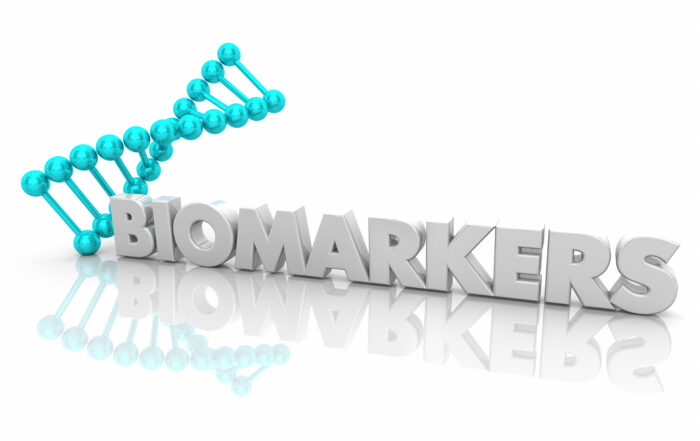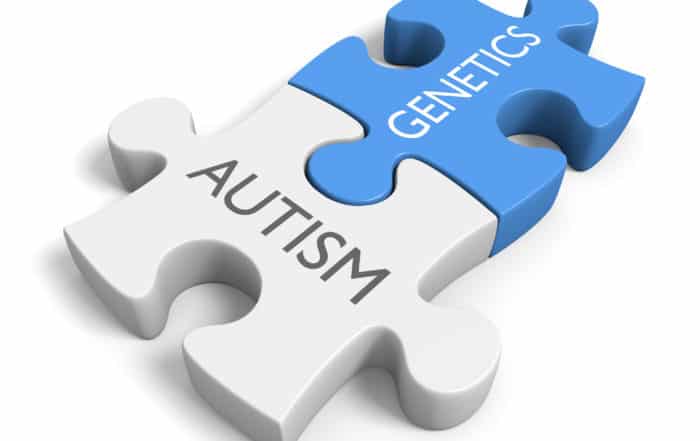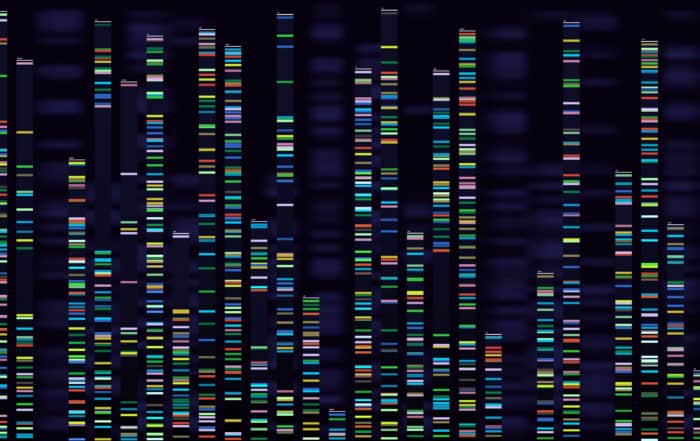Dr. Casanova dives into Ehlers-Danlos (EDS) and related hypermobility syndromes in this webinar. She describes EDS with a focus on the joint hypermobility spectrum. The presenter highlights that this field of study is in its infancy and that much more research is needed. She outlines recent findings that have shed light on the roles collagen fibers play within the body and the brain. Casanova discusses the co-occurrence of EDS and autism and other hypermobility syndrome disorders and wonders what other roles collagens play in the body. She outlines future research aims and closes with a question-and-answer session.
Take the knowledge quiz for this presentation here
Learn more about Dr. Casanova here
In this presentation:
2:20 – What are Ehlers-Danlos Syndromes (EDS)
3:42 – Types and prevalence of EDS
5:34 – Joint hypermobility spectrum
7:18 – hEDS and HSD
8:32 – Fibrillar collagens
9:48 – Collagen fibers in EDS skin
11:58 – Study: Ultrastructural differences in collagen in “unaffected” family members
13:07 – EDS and Autism
14:32 – Study: Hereditary relationships between EDS and autism
17:39 – EDS, autism, and the maternal immune system
18:52 – Study: Immune symptoms in EDS
22:20 – Mast Cell Activation Syndrome (MCAS)
24:18 – Marfan Syndrome and TGF-beta proteins
26:15 – Loeys-Dietz Syndrome
26:30 – Non-fibril collagen as antibacterial agents
29:16 – Hormonal and autonomic symptoms in EDS and autism
31:25 – Postural Orthostatic Tachycardia Syndrome (POTS) and treatments
37:03 – Connective tissue in the brain
44:35 – Future research avenues
47:30 – Question and answer session
Summary:
Dr. Casanova defines Ehlers-Danlos Syndromes as a group of rare diseases characterized by issues with joint hypermobility, skin elasticity, tissue fragility, and musculoskeletal pain and instability (2:20). The prevalence rate of EDS is one to ten in every 5,000 people. However, the presenter notes that prevalence is likely higher in specific clinical populations (4:44). Casanova remarks throughout the presentation that collagen research is in its infancy, and more clinical trials are needed.
The most common type of EDS is Hypermobile EDS (hEDS), which is associated with collagen mutations (3:41). Casanova outlines the joint hypermobility spectrum noting variation in degrees (localized or generalized) of hypermobility and levels of impairment – ranging from asymptomatic to severe musculoskeletal impairment (5:34). She explains the importance of fibril collagen fibers in creating major structural components of connective tissues (9:30) and notes observed variability in size, density, and shape of fibril collagen across types and cases of EDS (9:48).
The prevalence of co-occurrence between the joint hypermobility and autism spectrums is unknown (13:07). However, recent survey studies of EDS mothers, mothers with autism, and control groups have revealed potential relationships between autism and EDS (11:58). Findings suggest that 1) hypermobility occurs on a spectrum (11:58) and 2) some hereditary relationship between EDS/hEDS and autism exists. Response result trends across presented studies show individuals with EDS presenting slightly more symptoms than those with autism and significantly more than the control (14:32; 16:21). Two studies found differences by sex (18:52) – in one on autonomic symptoms, the difference by sex was present in all three groups (30:15).
The presenter notes a survey study that found EDS groups reported more adverse reactions to vaccination. She states that various subgroups are susceptible to different things and urges individuals with EDS to take vaccines slowly and for practitioners to judge on a case-by-case basis (19:45). Casanova outlines Mast Cell Activation Syndrome (MCAS) (22:20) and Postural Orthostatic Tachycardia Syndrome (POTS) (31:25), which often co-occur with EDS, and presents hypotheses explaining this co-occurrence (34:18).
Marfan Syndrome, Casanova explains, is another connective tissue disorder that deals with a mutation in the fibrin (storage areas/binding sites) of proteins involved in connective tissues (24:18). When fibrin deficits or abnormalities are present, proteins and other rapidly moving molecules cannot bind properly (25:15). Researchers posit that collagen likely has similar storage/binding characteristics to fibrin and other general connective tissue functions (25:45).
Dr. Casanova highlights how much we do not know about collagen and connective tissue functions in general and wonders how many other ways collagen is involved in immune system regulation or as part of the actual functionality itself (26:30). She emphasizes that we have just realized connective tissue is not only structural but also intricately involved in development and body function (44:35). She outlines her new research partnership with Max Planck Institute (45:12) before opening the floor to questions (47:30).
Certificates of participation are available after successful completion of a brief knowledge quiz at: HERE
Handouts are online at: HERE
Published: 09/12/2018
 Dr. Casanova earned her doctorate in Anatomy Science & Neurobiology from the University of Louisville’s Medical School. She is currently a Postdoctoral Fellow with the University of South Carolina’s School of Medicine at Greenville, working in close conjunction with the Greenville Health System’s (GHS) Departments of Psychology and Developmental-Behavioral Pediatrics in the Department of Pediatrics. She has research background in neurobiology, developmental biology, and some genetics, dermatology, and neuropathology, with particular foci on neurodevelopmental conditions such as autism and connective tissue disorders like Ehlers-Danlos Syndrome (EDS)/Hypermobility Spectrum Disorders (HSD). Her current research foci/topics of interest include: 1) functional classification of high-risk autism genes; 2) the characterization of genomic features common to autism risk genes and those genes’ roles in the evolution of animal morphology; and 3) etiological overlap between autism and EDS/HSD. In addition to her research interests in EDS/HSD, she is also a zebra herself and is passionate about patient advocacy. She blogs at Science Over a Cuppa.
Dr. Casanova earned her doctorate in Anatomy Science & Neurobiology from the University of Louisville’s Medical School. She is currently a Postdoctoral Fellow with the University of South Carolina’s School of Medicine at Greenville, working in close conjunction with the Greenville Health System’s (GHS) Departments of Psychology and Developmental-Behavioral Pediatrics in the Department of Pediatrics. She has research background in neurobiology, developmental biology, and some genetics, dermatology, and neuropathology, with particular foci on neurodevelopmental conditions such as autism and connective tissue disorders like Ehlers-Danlos Syndrome (EDS)/Hypermobility Spectrum Disorders (HSD). Her current research foci/topics of interest include: 1) functional classification of high-risk autism genes; 2) the characterization of genomic features common to autism risk genes and those genes’ roles in the evolution of animal morphology; and 3) etiological overlap between autism and EDS/HSD. In addition to her research interests in EDS/HSD, she is also a zebra herself and is passionate about patient advocacy. She blogs at Science Over a Cuppa.
Biomarkers start telling us a story: Autism pathophysiology revisited
Learn about emerging research on biomarkers and autism from a recent ARI Research Grant recipient. This is a joint presentation with the World Autism Organisation. The presentation by Dr.
The Low-Hanging Fruit: Exploring Monogenic Syndromes with Elevated Rates of Autism
Learn research updates on how genes associated with autism are functioning in the brain and how changes in these genes are linked to characteristics of autism and other conditions.
Prenatal exposure to cannabis may increase likelihood of autism
Cannabis use during pregnancy may alter placental and fetal DNA methylation (the process of turning genes “on” and “off”) in ways that increase the likelihood of autism spectrum disorder (ASD) or
Autism and Ehlers-Danlos Syndrome – Updates
Dr. Emily Casanova and Rosie Head discuss research updates on Ehlers-Danlos Syndromes (EDS) and their overlap with autism. Casanova outlines ongoing research investigations into the genetic factors that contribute to the expression of
Behavioral and Brain Signatures of Autism in Females
Kaustubh Supekar, Ph.D., examines recent findings about gender/sex differences in autism phenotypes and brain organization. He highlights the underrepresentation of females in autism and underscores the need for a large-scale science approach. The
Alzheimer’s drug appears to benefit adult men with fragile X
A drug intended to help people with Alzheimer’s disease may also be beneficial for individuals with fragile X syndrome, according to a new study. Fragile X syndrome is the most common known







